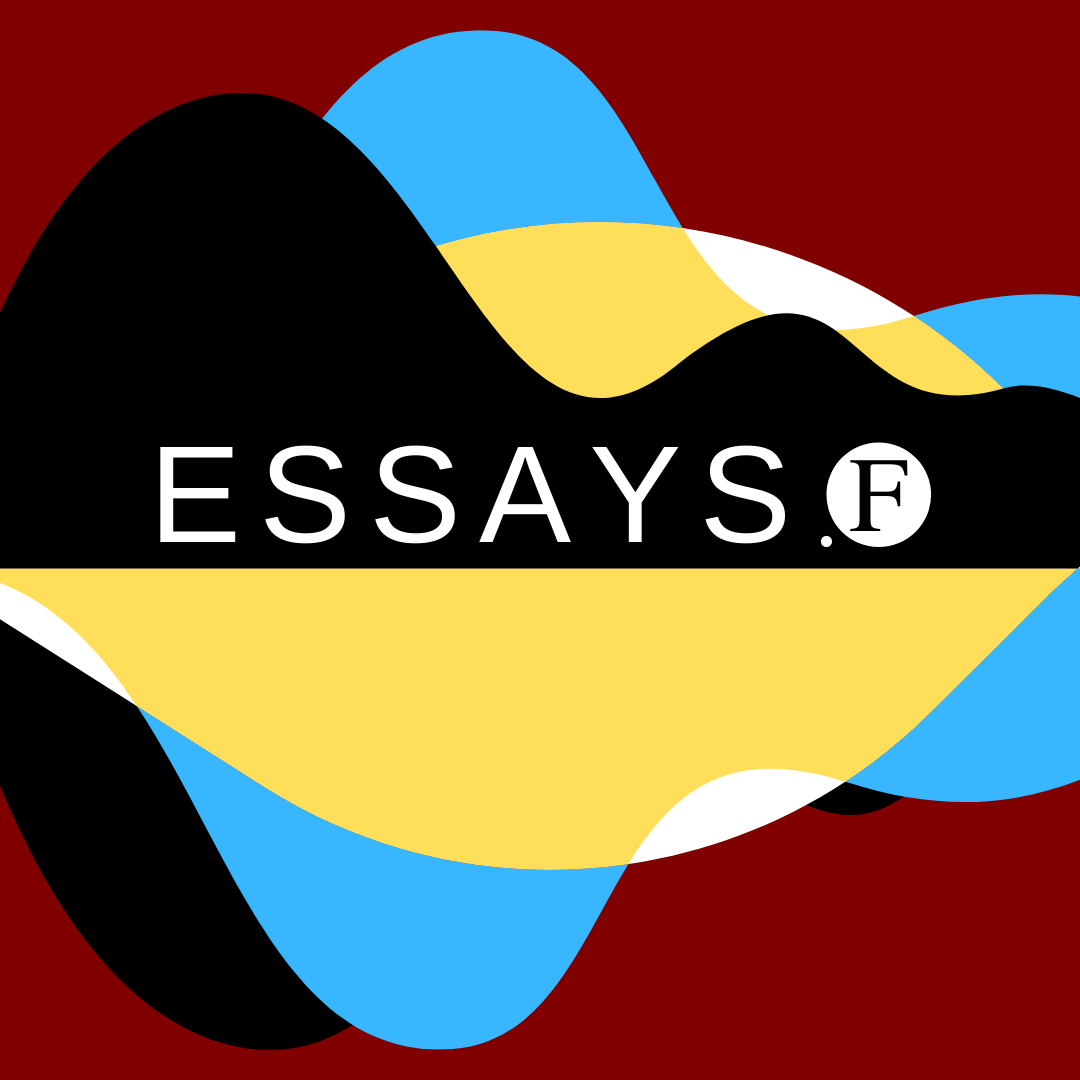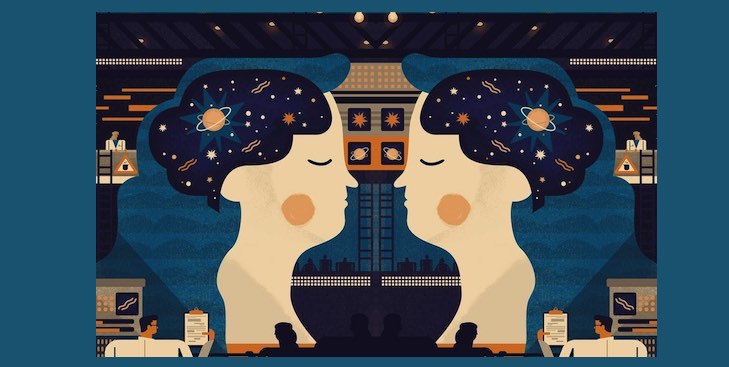Mental Conflict
Hili Razinsky on what ambivalence means for the person and for rationality
Reuben wants to go to the theatre, but also to stay at home and rest. Simeon wants and does not want to be respected. Levi loves his mother, but hates her as well. Judah loves his father, yet is a bit ashamed of him. Issachar judges Judah to have been right and yet terribly wrong in convincing his brothers to sell their younger brother Joseph, whom they wished to kill. Dan understands that the family should leave for Egypt, but really does not want to. Gad wants to harm Joseph, for which he despises himself. Dinah, having heard that her brothers sold Joseph, cannot believe it, yet believes it anyway.
People are regularly ambivalent. Sometimes ambivalence paralyses us, or makes us mute, or we vacillate between attitudes, or repress one of them. Yet we can also act on our ambivalence and let it forge our other attitudes. Indeed, our lives are full of internal conflicts and much of our behaviour illustrates the conflictual relationship between our opposing attitudes.
But ambivalence seems impossible, or at best a marginal and irrational phenomenon. Conscious unity seems to imply that the two poles of ambivalence cannot be simultaneously experienced, and wellbeing, freedom, integration, development, and creativity are all presumably defeated by it. In particular, predominant philosophical accounts of rationality exclude ambivalence. According to Donald Davidson, for example, the ‘consistency’ of attitudes is a part of the definition of basic rationality. He argues that when we say that a person takes some attitude or acts in a certain way, we are appealing to connections between this attitude or action and that person’s other attitudes (and, more generally, to actual and possible connections between any of the person’s attitudes). If, for example, you think that a person is going home to take a rest, you ascribe to her other attitudes as well: you typically think that she is tired and that she believes that she would be able to rest at home. In this way, attitudes borrow their sense and rationality from their connections to the person’s other attitudes and behaviour. For Davidson, this means that if we understand a person as having a certain attitude, then by the same token we accept that she does not also maintain an opposing attitude, at least if she is to be considered rational.
My book Ambivalence defends the view that rationality is an intrinsic part of being a person. But if personhood is bound up with rationality and ambivalence is irrational, are we to infer that we are not ambivalent? Or that we are not fully persons when we are ambivalent? But why should we accept such views of personhood that debar ambivalence? As the opening examples may suggest, in some form or other, ambivalence is always part of the game of life. And if human lives are often ambivalent, this may be taken as an invitation to re-think our notions of personhood and rationality, as well as those of desire, judgement, emotion, action, and consciousness. But let’s start with a closer examination of ambivalence.
A momentary act, thought, or feeling can all be thoroughly ambivalent; at the same time, ambivalence is not a mere momentary feeling or behaviour. Rather, it has the time span of attitudes, and in particular it often characterizes our medium- and long-term attitudes. We are ambivalent in our relationships and towards our work; we can be ambivalent about the facts regarding matters of importance and even in appreciating what is important. As is the case for other ways of engaging with people and things, instances of ambivalence constitute threads in our lives. We spin these threads in dealing with our ambivalence and, by the same token, we give the ambivalence its shape.
But perhaps instances of purported ambivalence only mean that rationality or personhood have broken apart and that one’s mind has somehow split in two, or that one is merely confused. Ambivalence often calls for metaphors of division and it may verge on states of confusion, where it is not clear, for example, whether the person really does feel a particular way. Yet the examples above suggest a stricter sense of ambivalence that involves opposing attitudes taken by a unitary person. In such examples, we do not merely have both an attitude X and an attitude Y, but we are ambivalent between them.
Maybe the purported instances of ambivalence do not deserve the name and the two attitudes that appear to conflict are, in fact, harmonious? Thus it might be thought that when we are ‘ambivalent’, we want one aspect of a thing and do not want another aspect of it, or we love one aspect of a person and hate another. But this will not do. In many cases, we are not at all concerned with different aspects of the object, but with the object as a whole. And when we are conflicted about different aspects of a person, state of affairs, or action, we are not merely concerned with these aspects but rather we have opposing attitudes towards the person, state of affairs, or action themselves.
What is ambivalence, then? Ambivalence can be described both as two attitudes and as one ambivalent attitude: it always involves taking two opposing views but, in taking them, the ambivalent person always also takes a unitary ambivalent view. Ambivalence in this sense can be described as a single, tension-fraught attitude. To have a tension-fraught attitude towards something or someone is, all the same, to have some attitude. Levi, for example, is not indifferent to his mother. On the contrary, he both loves and hates her. United in a conflicted attitude, his love and hate constitute interdependent points of view. He loves the mother who is hateful to him and he hates her whom he loves.
Attitudes do not have to be consistent or harmonious to be understood in terms of the sense lent to them by their connections with the rest of the mind, in the manner Davidson suggested. A particular attitude consists in its actual interlinkages with the rest of one’s mind, and this includes conflictual connections. In attributing ambivalence to Dan or Gad, for example, we attribute to them two opposing attitudes, and we understand these attitudes as borrowing their sense from their conflictual connection as well as their connections with other attitudes, behaviours, and so forth.
In Dan’s case, for instance, the point is that he is hostile to something—the move to Egypt—that he himself takes to be essential. Moreover, not only are the attitudes connected as poles of ambivalence, but this ambivalence also makes sense in terms of its further mental interlinkages. Thus to understand that Dan might judge that the family should leave and yet not want this to happen is to take his opposing attitudes as connected with the further attitudes, acts, feelings, and thoughts that form the concrete character of his ambivalence. It is what he does or says—or his silence, or the way he says it—that suggests to us that his attitude is ambivalent.
Our attributions of ambivalence imply that ambivalence is rational in the same way that the attribution of wholehearted judgements, conduct, and so on implies their basic rationality. Like wholehearted attitudes, ambivalent attitudes may be quite irrational, others interestingly rational. But one way or another, they reveal ambivalence as central to personhood and rationality.
The Source Code
This essay is based on Ambivalence: A Philosophical Exploration, by Hili Razinsky (Rowman and Littlefield, 2017).






